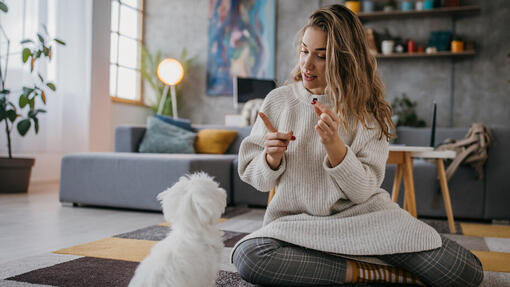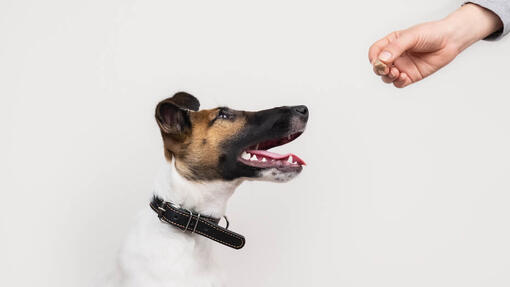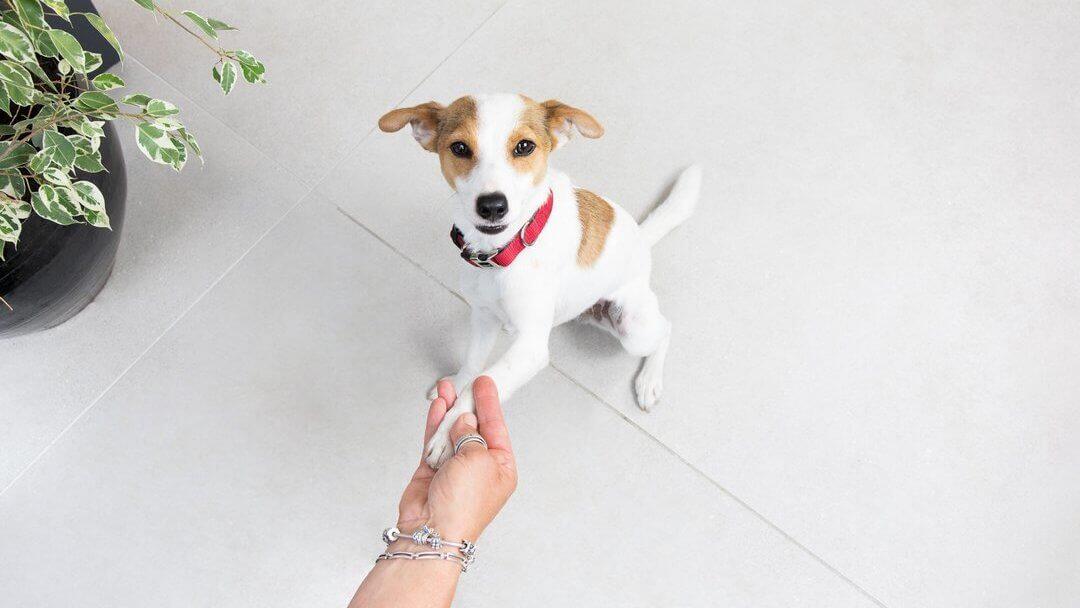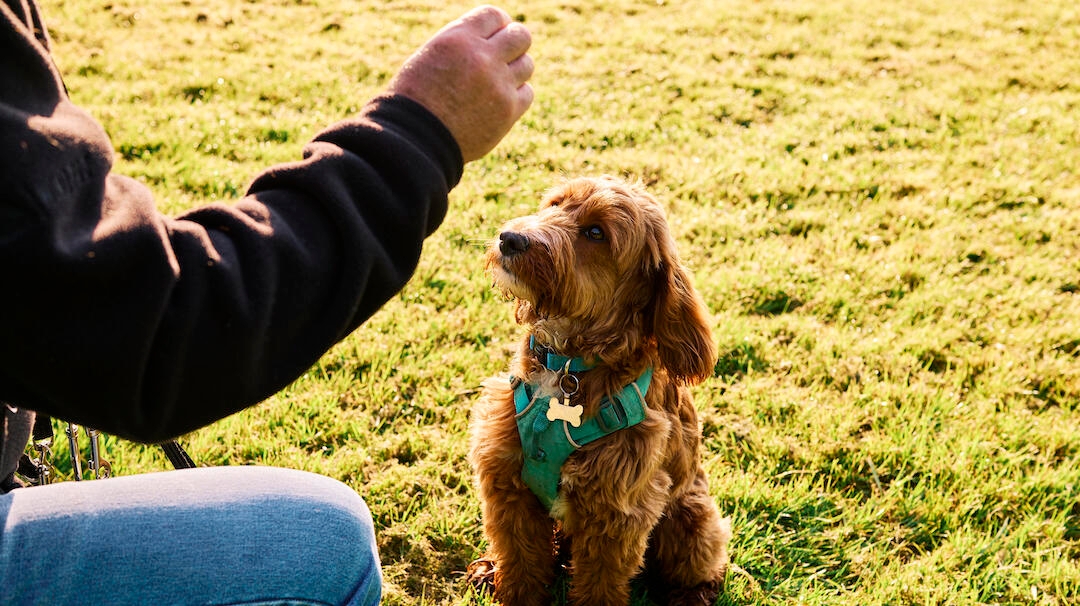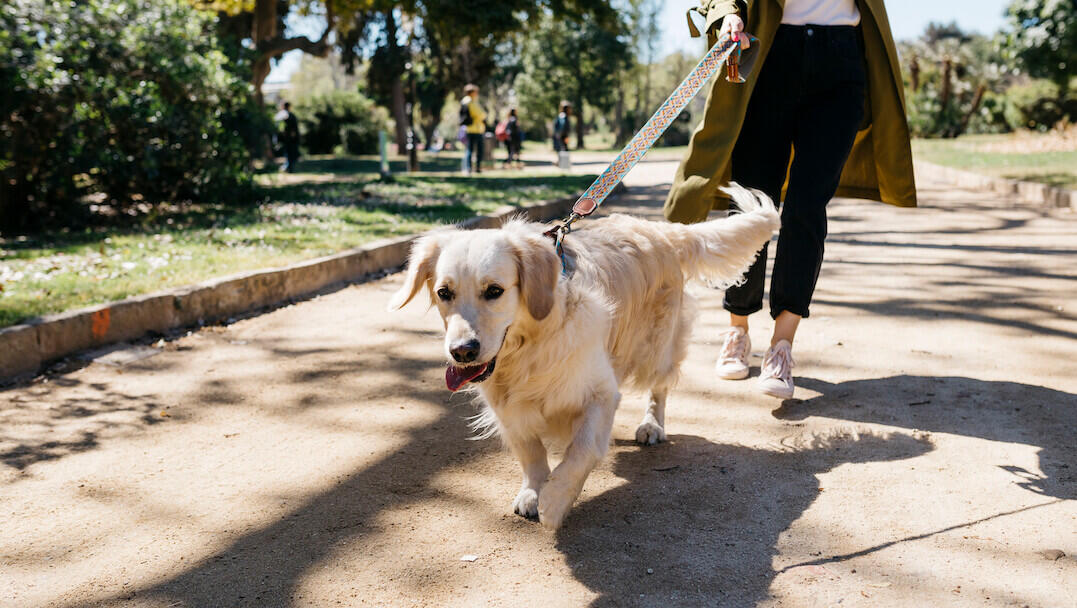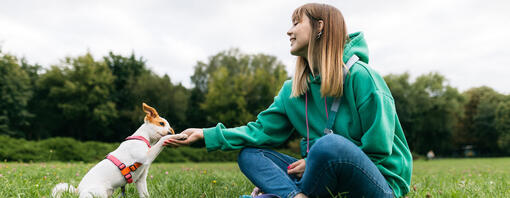
Whether you’re looking to add another cool party trick to your pup’s collection or just strengthen your bond, learning how to teach a dog to give paw is a great way to achieve both. For most dogs is also an easy trick for them to learn so you’re sure to have a great time doing it, all while your pup gets to show off his ‘pawesome’ skills!
In this article, we’re going to go through the process of teaching your dog how to give you their paw, and help you teach your pup how to master it in no time. Read on to find out all there is to know about this cool party trick.
When can you start teaching your dog tricks?
Teaching your dog tricks fun skills like how to give you a paw, can start as soon as t soon as they have settled into their new home and are relaxed and settled. However, it’s never too late for them to pick up new skills or behaviours so, if your dog is older, it won’t be a problem either.
Pups can sometimes learn new things easier and faster compared to older dogs especially those who don’t have much learning experience behind them, but with patience and time – and plenty of rewards - old dogs can learn new tricks. Older dogs who have been learning new things all their life and who have a good bond with their owner can learn extremely fast as they have a lifetime of good experiences to draw on.
Why should I teach my dog paw?
Teaching your dog to give you their paw is a great way to build your relationship with your four-legged friend as you spend some quality time with them during the training process. Giving you their paw is also a good experience in building trust – as long as you do it right and don’t grab or hold on to their paw.
What you need to teach a dog paw
This is a simple trick to teach, and you don’t need any equipment although there are some things that are definitely needed:
- A quiet space with no distractions – this will help your pup focus and concentrate on you.
- A carpeted floor. You should not ask your dog to lift a paw off a potentially slippery surface.
- Treats – choose your dog’s favourite treats but make sure these are both tiny and healthy. Things like small bits of cheese can work well - or something else that you know they enjoy.
- A well-rested and eager-to-learn pup. Don’t train when they are sleepy or have just had a meal!
- A puppy who has already got to grips with the ‘sit’ exercise as that will be their starting point.
- Time and patience
How to teach a dog to give paw in 10 simple steps
There are two ways to teach this – depending on your dog and what their own natural behaviours are.
Follow these easy steps to make sure your puppy becomes a ‘paw master’ in no time.
- Ask your puppy to sit and reward them for doing this a few times.
- Then once they are sitting, take a treat and close your fingers around it so they can smell it but not get to it.
- Get them interested in the treat but hold it quite low – halfway between their nose and their paw.
- Have your other hand (the one you are going to want to ‘shake paws, with), palm open, right beside it or even underneath it.
- Let them try and work out how to get the treat. They will no doubt try to use their nose or their mouth first.
- Once they discover that won’t work, they will try other things – and one of these will be to lift their paw up to see if scratching at it might work.
- As soon as they lift the paw, say ‘paw’ and give them the treat.
- Repeat but each time, wait till they lift their paw to your hand (don’t hold it too high – especially if you have a tiny dog or very young puppy). Your aim is that they put the paw on your open hand.
- Once your pup has got the hang of this, just hold out your flat hand with no treat. When they put their paw onto it, say the cue word and give them the treat from your other hand.
- Practise, practise, practise – until your dog will put their paw onto your hand on the cue word alone.
Alternative
If you have a dog who uses their teeth hard or who are so mouth focused, they will just keep chewing at your hand to get the treat, you need a different method.
For them, from a sit, hold the treat quite high at the end of their nose and slowly move it to the side. You want to move it slowly enough that your dog leans and puts their weight on one front paw. Move it just a little further, and their paw will lift slightly off the ground. Theyn you can say good and reward with the treat.
With each successive repetition, your dog will begin to realise that lifting the paw is what earned them the treat.
Then you can continue as above.
What to avoid when teaching your dog to give a paw
To make any training more pleasant and even fun, make sure to keep it simple and avoid putting too much pressure on your pup, or even on yourself. Here are a few things you should avoid when starting training on how to teach a dog to give paw.
Don’t grab!
Never grab or hold on to your dog’s paw. This trick is about them offering their paw to you. Many dogs find having their paws held on to unpleasant or even scary. This trick is about fun and trust.
Long sessions
If your sessions are too long, there’s a high chance that your dog will become bored, and their attention will wander.
A dog’s attention span can be short – and a puppy’s even more so – especially when they have to do repetitive things so it’s best to keep the sessions to less than 5 minutes.
It’s far better to do several very short training sessions on the same day than one long one. Puppies learn far more if they have a break to absorb what they learnt and will usually come back to the next session far better than they ended the last one.
Training when your dog is tired
Before starting training, it’s a good idea to make sure that your pup is ready and eager to learn. You want to make sure they are awake and not sleepy - and that you are not training straight after a meal (when they aren’t going to be interested in working for treats).
Also, make sure they have water available and have been to the toilet.
Keep treats small, healthy and tasty
Often people overestimate how big a treat needs to be. A piece of cheese or meat that you use as a reward should be no bigger than half the size of your little fingernail.
When you are teaching a dog to give paw, you will be rewarding them a lot as that is how they learn the behaviours you want but you definitely don’t want them getting either full or fat!
Teaching a dog to give you its paw should be fun and full of positive rewards. Never scold or get impatient with your dog during their training, as this will undo all the hard work you have done and can make them afraid of training with you in the future.
All in all, the key to teaching your pup new tricks is keeping it fun. With enough patience and enthusiasm, your pooch will quickly master the ‘paw trick’ and any other tricks you might want them to learn. If you want to teach your pup easier tricks, read our article on the 5 Cool Tricks to Teach Your Dog next.



